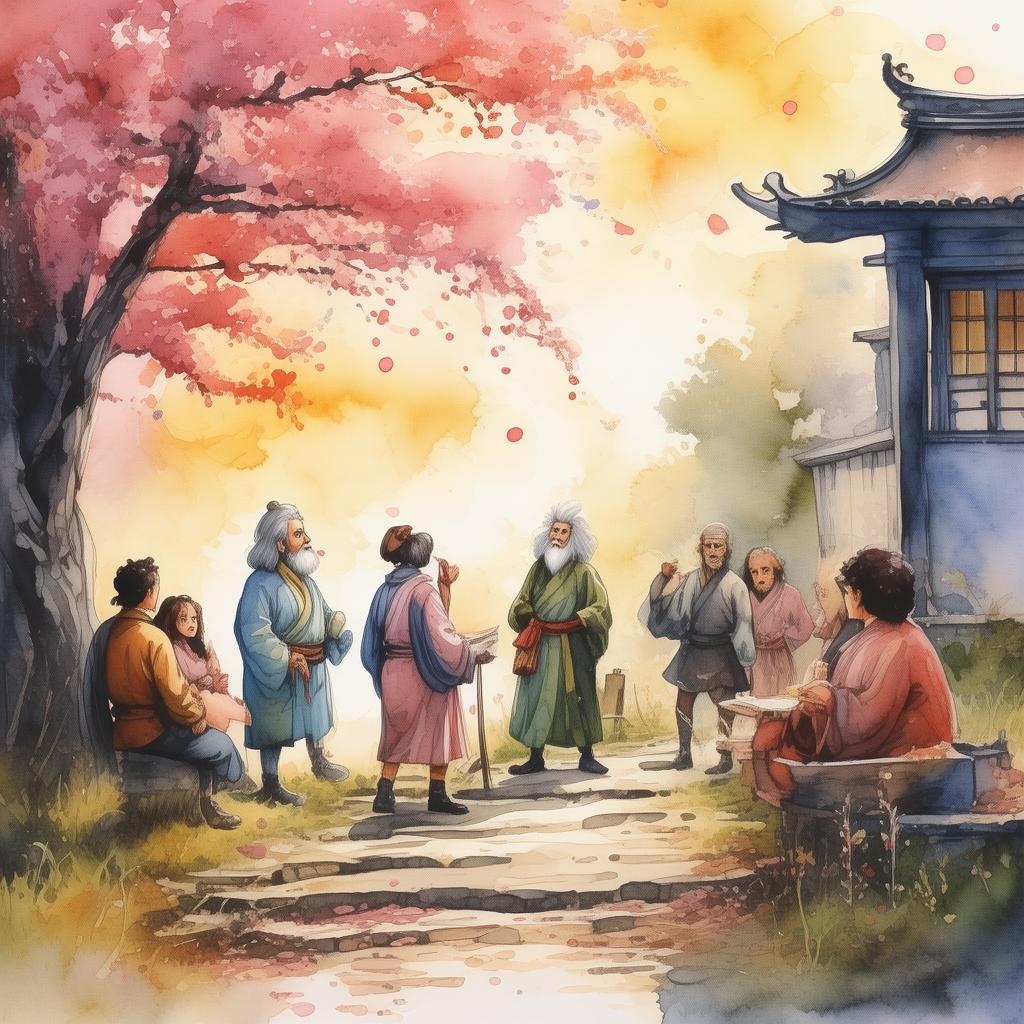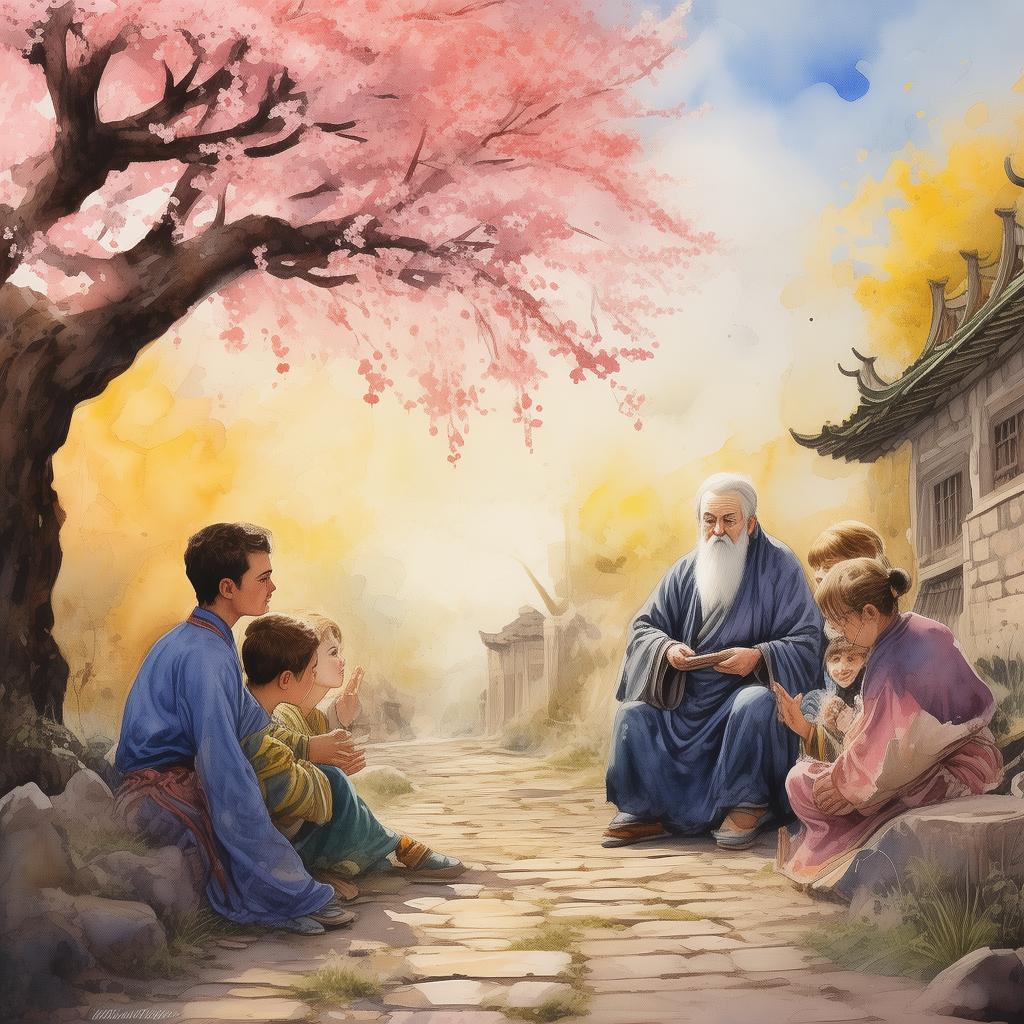Bravehearts in the Bamboo Grove: The Tale of the Tiger's Dance
In the verdant expanse of the Sichuan province, nestled amidst the towering bamboo groves, there lay a small village known for its age-old tradition, the Tiger's Dance. This was not merely a dance; it was a rite of passage, a cultural heritage that had been passed down through generations, symbolizing the villagers' connection to the land and their reverence for the majestic tiger.
The village of Baima, meaning "White Tiger," was the site of this annual celebration. The villagers, known for their resilience and courage, gathered every spring to perform the Tiger's Dance, a spectacle that entwined the spirit of the tiger with the rhythm of the earth.
The story of the Tiger's Dance was told through whispers and legends, each tale more colorful than the last. It was said that a long time ago, a real tiger had visited the village, bringing prosperity and luck. To honor the tiger's visit, the villagers began the tradition of the Tiger's Dance, a dance that was as much a celebration as a way to keep the tiger's spirit among them.
This year, the village was preparing for a grander celebration than ever before. The leader of the village, an elder named Long, had decreed that the dance would be the grandest in the history of Baima. The reason for this was not only to celebrate the prosperity but also to honor the bravery of a young warrior named Fei, who was set to perform the role of the tiger.

Fei was known throughout the village as a boy of immense talent and a heart brimming with courage. His father, a former warrior, had taught him the ways of the tiger, but Fei felt he had not yet proven his worth. The Tiger's Dance was his chance to do so.
The weeks leading up to the dance were a whirlwind of preparation. Fei trained tirelessly, learning the intricate movements and the soulful expressions that the dance demanded. The villagers, moved by his dedication, helped him perfect his skills, and the whole village buzzed with excitement.
The night of the dance arrived, and the village was abuzz with activity. The bamboo grove was adorned with lanterns, and the air was thick with anticipation. Fei, dressed in a shimmering suit of tiger fur, stepped into the circle, his heart pounding with a mix of fear and excitement.
The dance began, and Fei was soon lost in the rhythm. His movements were fluid, his eyes fierce, and his roar filled the air. The villagers watched in awe, their spirits lifted by the dance's energy.
As the dance progressed, Fei felt a surge of power, a connection to the tiger's spirit that he had never felt before. But then, a sudden change. The music stopped, and the villagers gasped as Fei stumbled, his suit catching on a bamboo spike.
In that moment, Fei saw the villagers' eyes not as admiration, but as a test. He had failed, he realized, not by his dance, but by his assumption that the dance was merely a physical challenge. The true test was of his character, of his bravery.
With a newfound resolve, Fei stood tall, his face etched with determination. He began to dance again, his movements slower, more deliberate. He focused on the spirit of the tiger, the connection to the land, and the bond with the villagers.
As he danced, he felt the tiger's spirit within him, guiding his movements, giving him the courage he needed. His roar was no longer one of brute strength but of wisdom and unity. The villagers, moved by his transformation, joined in, their voices harmonizing with his dance.
The dance concluded, and the villagers erupted in cheers. Fei had not only proven his courage but had also redefined what it meant to be brave. The Tiger's Dance had not been a mere physical challenge; it was a journey of self-discovery and the realization that true bravery lies in understanding one's connection to the world and to others.
As the night ended, Fei stood in the bamboo grove, the tiger's spirit still within him. He had learned that bravery was not the absence of fear but the ability to face it head-on, with an open heart and a willing spirit.
And so, the tale of the Tiger's Dance continued, not just as a celebration of the village's connection to the land, but as a story of the universal human quest for courage and self-discovery.
✨ Original Statement ✨
All articles published on this website (including but not limited to text, images, videos, and other content) are original or authorized for reposting and are protected by relevant laws. Without the explicit written permission of this website, no individual or organization may copy, modify, repost, or use the content for commercial purposes.
If you need to quote or cooperate, please contact this site for authorization. We reserve the right to pursue legal responsibility for any unauthorized use.
Hereby declared.









